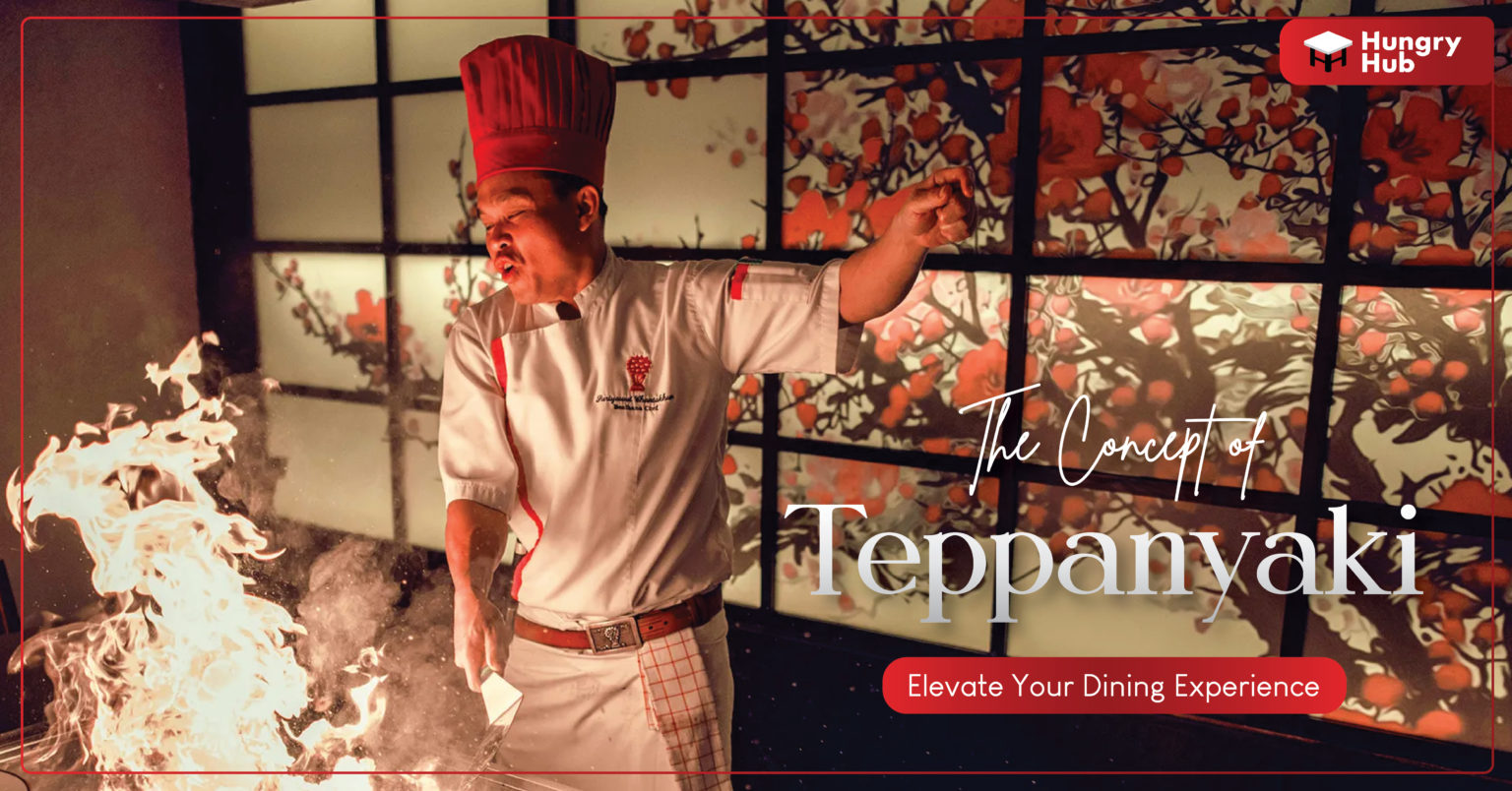This blog is a must-read if you’re wondering “What is teppanyaki?” Teppanyaki is a popular Japanese cooking style that combines skillful cooking techniques with an unforgettable dining experience. We will look at the history of teppanyaki, the cooking process, the ingredients used, and the cultural significance of this culinary art form in this blog post. So grab your chopsticks and come along with us on this tantalizing journey into the world of teppanyaki!
What is Teppanyaki?
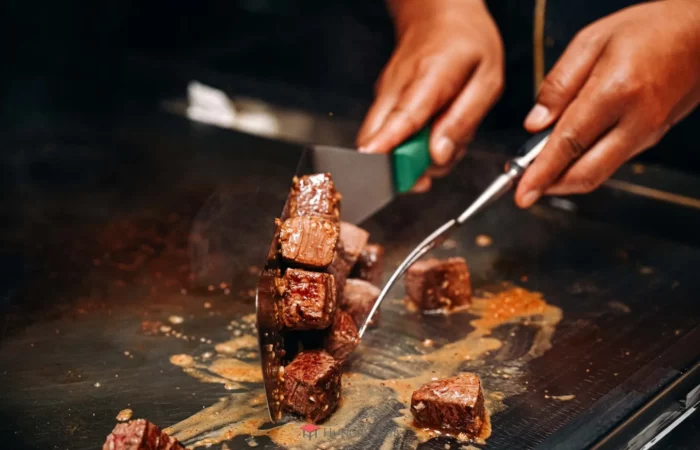
Teppanyaki, which translates as “grilling on an iron plate,” is a traditional Japanese cooking technique that dates back to the mid-20th century. It entails cooking a variety of ingredients, including meat, seafood, and vegetables, on a large, flat iron griddle known as a teppan. The teppan is usually heated to a high temperature, which allows for quick and precise cooking.
The Origins of Teppanyaki
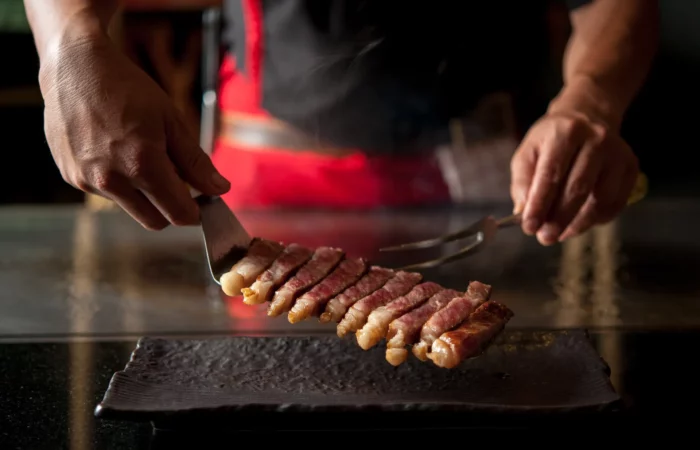
Teppanyaki first gained popularity in Japan in the 1940s and 1950s. It was originally introduced by Japanese chefs who sought to combine Western-style grilling with traditional Japanese ingredients and flavors. The interactive nature of teppanyaki, where the chef cooks the food right in front of the diners, quickly became a hit, creating a unique and entertaining dining experience.
The Cooking Process
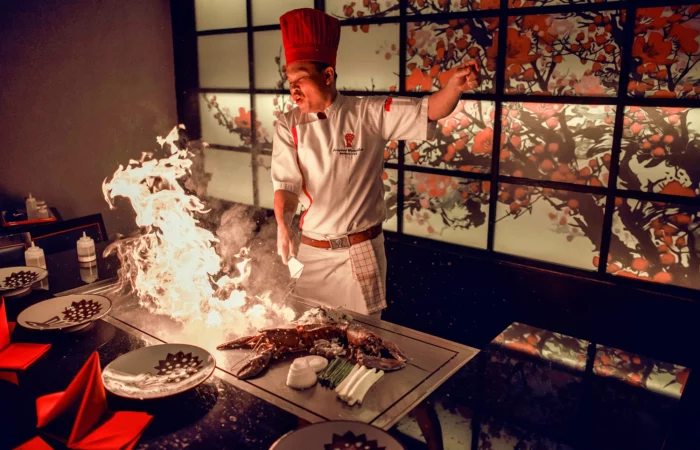
Teppanyaki is as much about the showmanship as it is about the food itself. The chef’s mastery of knife skills, precise cooking techniques, and theatrical flair adds to the overall experience. Here’s a breakdown of the cooking process:
Preparation: Before the chef begins cooking, the teppan is preheated to a high temperature, ensuring that it is hot enough for searing and grilling.
Ingredients: A variety of fresh ingredients are used in teppanyaki, including thinly sliced beef, chicken, shrimp, scallops, lobster, and an assortment of vegetables. These ingredients are often served alongside rice, noodles, and a flavorful array of sauces.
Seasoning: The chef adds seasonings such as soy sauce, garlic, ginger, and sesame oil to enhance the flavors of the ingredients.
Cooking: With a flick of the wrist and a sizzle on the teppan, the chef skillfully cooks the ingredients. The ingredients are tossed, flipped, and seared to perfection, creating a symphony of aromas and sounds.
Plating: Once cooked, the teppanyaki delicacies are artfully plated and served directly to the diners, still sizzling and hot.
The Ingredients
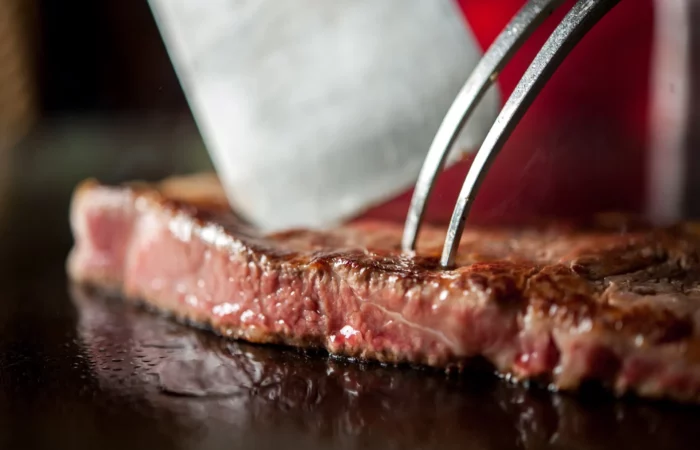
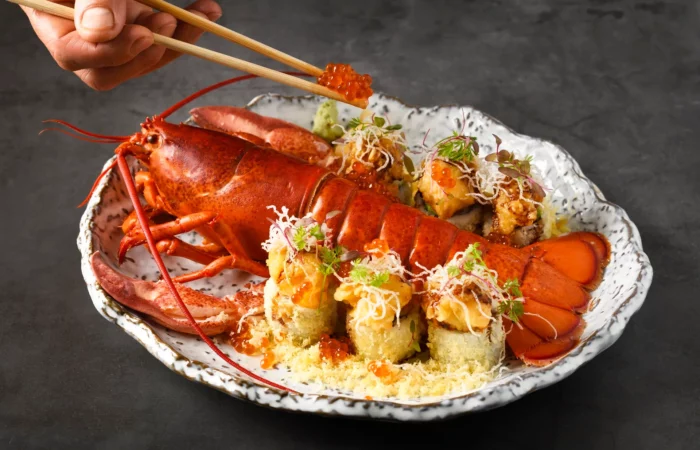
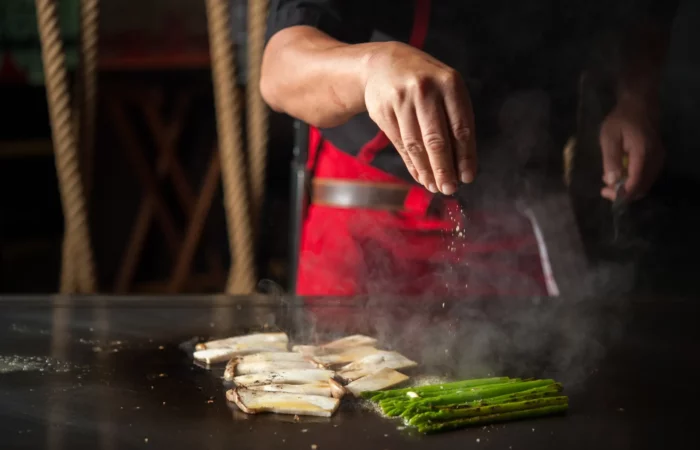
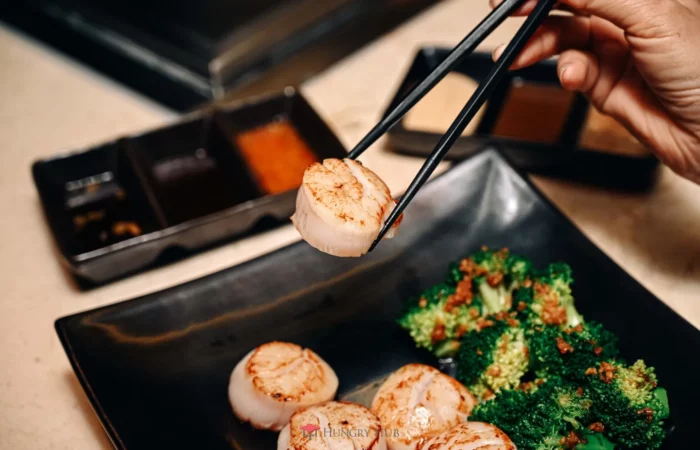
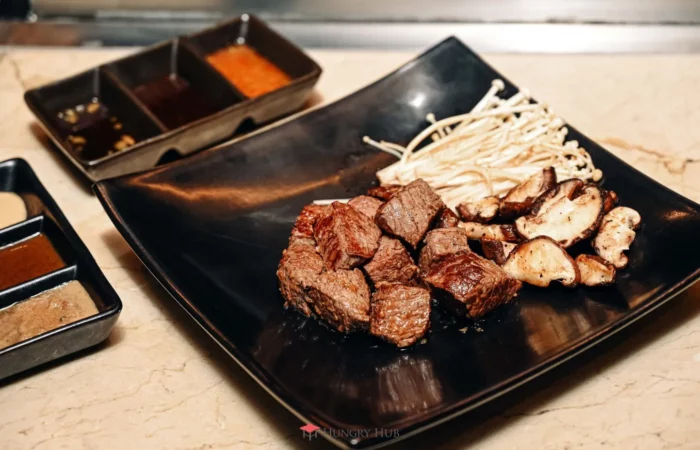
Teppanyaki showcases a diverse range of ingredients, offering a culinary adventure for the taste buds. Here are some of the key ingredients:
1. Beef
Beef is a star player, and thinly sliced cuts such as sirloin or tenderloin are commonly used. The marbling of the beef enhances the flavor and tenderness, resulting in juicy and succulent bites.
2. Seafood
Seafood holds a prominent place in this cooking method, with options like shrimp, scallops, lobster, and squid. The freshness and delicate flavors of these ingredients are heightened by the searing heat of the teppan.
3. Chicken
Chicken is another popular protein used. Tender chicken breast or thigh meat is thinly sliced and cooked to perfection, resulting in juicy and flavorful bites.
4. Vegetables
This cooking technique incorporates a colorful assortment of vegetables. Crisp and vibrant vegetables like onions, bell peppers, zucchini, mushrooms, and bean sprouts are often used. These vegetables add texture, flavor, and a healthy touch to dinners experience.
5. Noodles and Rice
To complete the teppanyaki feast, noodles and rice are often served alongside the main ingredients. Yakisoba, a stir-fried noodle dish, and fried rice are popular choices that complement the flavors of the teppanyaki ingredients.
The Cultural Significance
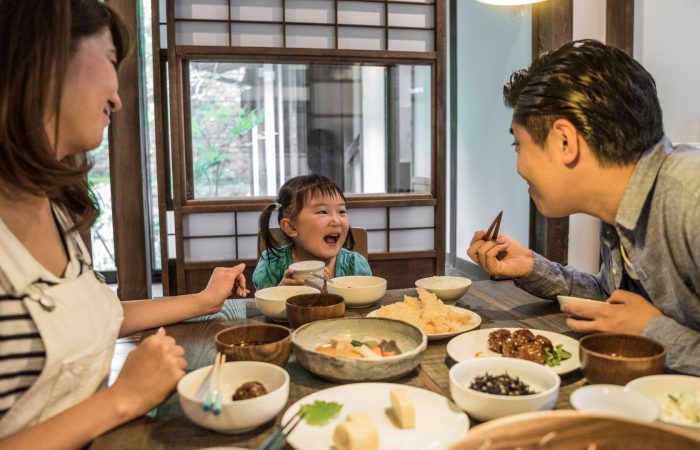
Teppanyaki is more than just a culinary style; it reflects the Japanese culture and values. Here’s a closer look at its cultural significance of:
1. Interaction and Togetherness
Teppanyaki is known for its interactive dining experience. The communal cooking and sharing of food create a sense of togetherness, fostering a warm and convivial atmosphere. It is a perfect way to bond with friends, family, or even strangers while enjoying a delicious meal.
2. Respect for Ingredients
Japanese cuisine, including teppanyaki, emphasizes the importance of high-quality ingredients and the respect for their natural flavors. The minimal use of seasonings allows the ingredients to shine, ensuring a harmonious balance of taste and texture.
3. Precision and Mastery
The chefs undergo years of training to perfect their culinary skills. Their precise knife work, impeccable timing, and artistic presentation showcase the dedication and mastery that Japanese cuisine is renowned for.
4. Entertainment and Showmanship
Teppanyaki is not just about the food; it’s a performance. The theatrical flair and skilled maneuvers of the chefs captivate diners, turning the dining experience into a memorable spectacle.
5. Innovation and Adaptation
Teppanyaki has evolved over time, adapting to different palates and preferences. Chefs have incorporated international flavors and ingredients into the traditional teppanyaki style, creating fusion dishes that appeal to a broader audience.
FAQs
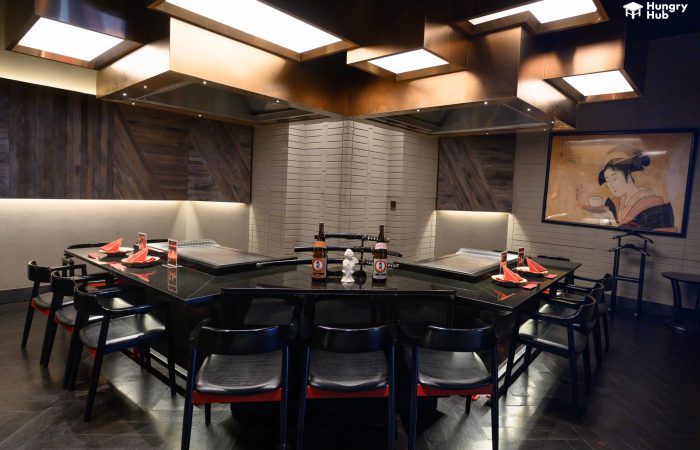
Q: Is it the same as hibachi?
- A: While teppanyaki and hibachi share some similarities, they are not the same. Teppanyaki refers specifically to the grilling on an iron plate, while hibachi is a small portable grill often used for outdoor cooking.
Q: Can I try it if I’m a vegetarian?
- A: Absolutely! Many restaurants offer vegetarian options, such as tofu, mixed vegetables, and vegetarian-friendly sauces. Just inform the chef about your dietary preferences, and they will be happy to accommodate you.
Q: Are teppanyaki restaurants expensive?
- A: The restaurants can vary in price depending on the location and quality of the establishment. While some upscale restaurants can be quite pricey, there are also more affordable options available.
Q: Can I request specific cooking preferences?
- A: Yes, most restaurants are open to accommodating specific cooking preferences. Whether you prefer your steak rare, medium, or well-done, or if you have any dietary restrictions or allergies, it’s best to inform the chef or staff beforehand.
Q: What are some popular sauces using?
- A: Some popular sauces include soy sauce, teriyaki sauce, garlic sauce, ginger sauce, and a tangy mustard sauce called “yum yum sauce.”
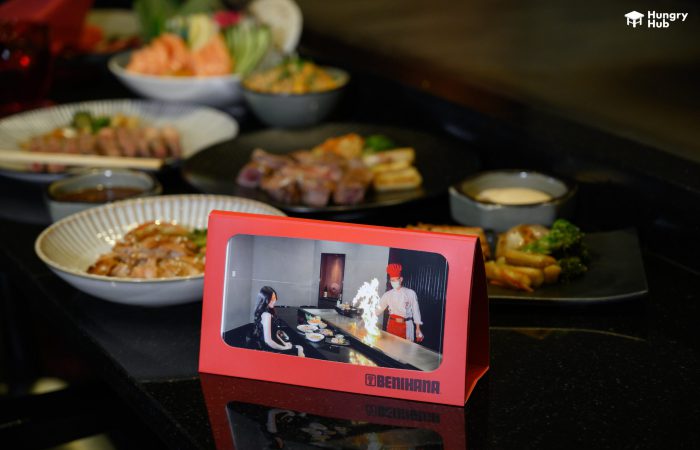
Teppanyaki is a fascinating culinary art form that combines skilled cooking techniques, fresh ingredients, and an enjoyable dining experience. Teppanyaki satisfies all of the senses, from the sizzling sounds of the teppan to the mouthwatering aromas that fill the air. There’s something for everyone in the world of teppanyaki, whether you like meat, seafood, or are a vegetarian. This blog hopes to have answered your question, “What is teppanyaki?” So round up your friends and head to a teppanyaki restaurant for an unforgettable Japanese dining experience!




